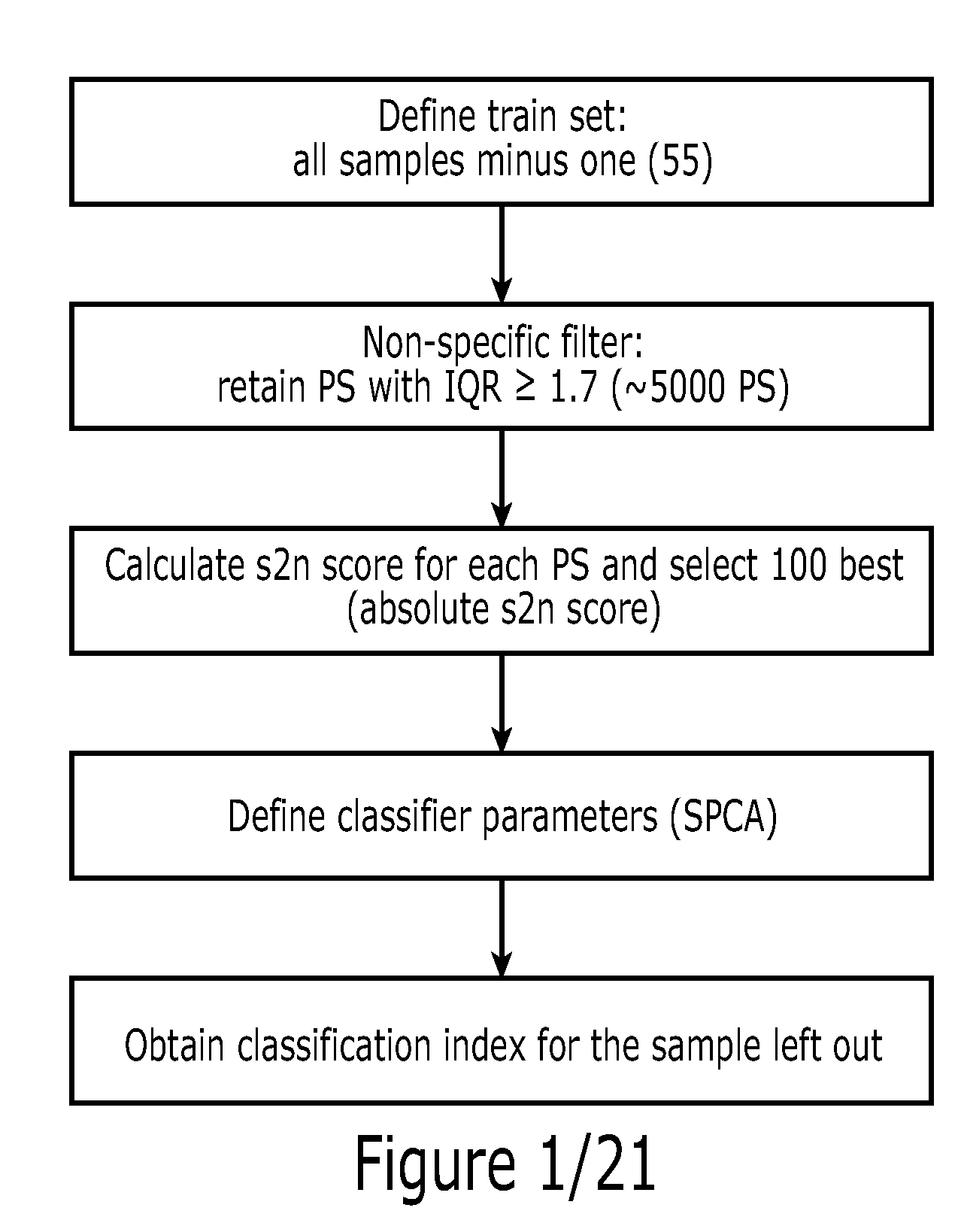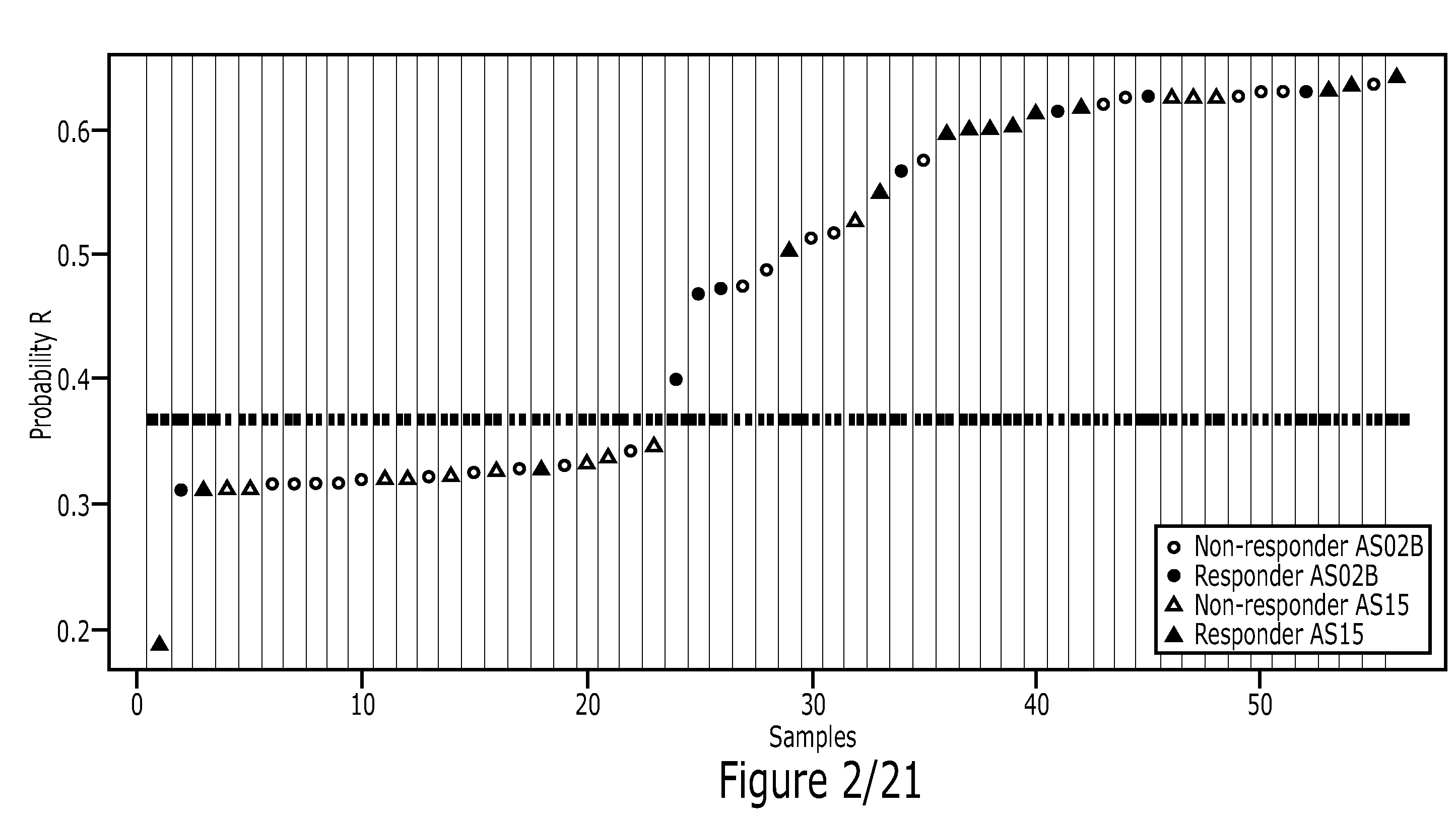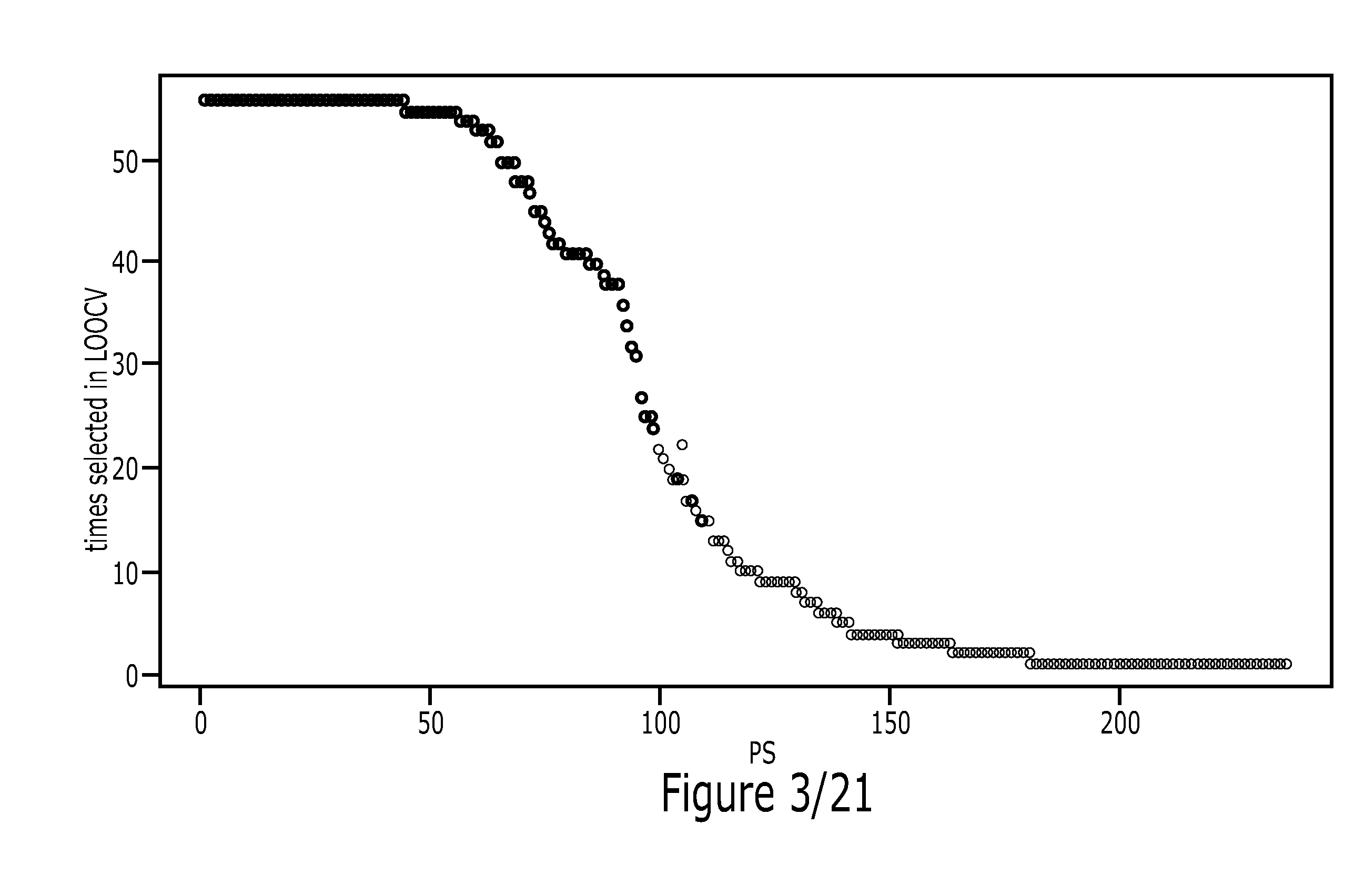Method
a gene expression and patient technology, applied in the field of gene expression profiles, can solve the problems of lung cancer, difficult cure of nsclc, poor outcomes for patients, and patients maintaining a substantial risk of relaps
- Summary
- Abstract
- Description
- Claims
- Application Information
AI Technical Summary
Benefits of technology
Problems solved by technology
Method used
Image
Examples
experimental examples
Example 1
MAGE008 Mage Melanoma Clinical Trial
[0568]In this on-going trial, the recMAGE-A3 protein (recombinant mage fusion protein) is combined with two different immunological adjuvants: either AS02B (QS21, MPL) or AS15 (QS21, MPL and CpG7909). The objectives were to discriminate between the adjuvants in terms of safety profile, clinical response and immunological response.
[0569]In this experiment two adjuvant compositions are made up of mixtures of two immunostimulants:[0570]1. QS21 (Purified, naturally occurring saponin molecule from the South-American tree Quillaja Saponaria Molina), and[0571]2. MPL (3 de-O-acetylated monophosphoryl lipid A—detoxified derivative of lipid A, derived from S. minnesota LPS).
AS02B is an oil-in-water emulsion of QS21 and MPL.
[0572]In animal models these adjuvants have been successfully shown to induce both humoral and TH 1 types of cellular-mediated immune responses, including CD4 and CD8 T-cells producing IFNα (Moore et al., 1999; Gérard et al., 200...
example 2
Melanoma Classifier Using Q-RT-PCR Data
[0663]The RNA used for gene expression profiling by microarray was tested in a custom Taqman Low Density Array (ABI, PN 4342259) containing 22 genes from the 100PS (83 genes) and 5 reference genes for normalization (GUSB, PGK1, H3F3A, EIF4G2, HNRNPC) (Table 3).
[0664]For this analysis; a total of 54 melanoma samples were included (52 also used for microarray analysis and 2 additional ones for which the microarray hybridization was not of good quality).
TABLE 5ABI Taqman Assay numbers for 22 genes plus reference genes used tobuild PCR based classifier in melanoma samples22 genes in 100PS measured by PCRGene symbolGene NameTaqman AssayCCL5chemokine (C-C motif)Hs00174575_m1ligand 5JAK2Janus kinase 2 (a proteinHs01078136_m1tyrosine kinase)IRF1interferon regulatoryHs00971960_m1factor 1CXCL9chemokine (C—X—C motif)Hs00171065_m1ligand 9IL2RGinterleukin 2 receptor,Hs00173950_m1gamma (severecombinedimmunodeficiency)CXCL10chemokine (C—X—C motif)Hs00171042_m...
example 3
[0693]Classification of NSCLC Samples with a Subset of 23 Genes Assessed by PCR Background
NSCLC Phase II Clinical Trial
[0694]This is a double blind placebo controlled proof-of-concept trial in MAGE-A3 positive, stage IB and II NSCLC patients after complete surgical resection of the tumor (CPMS 249553 / 004). The ASCI (Antigen-Specific Cancer Immonotherapeutics) agent is the recombinant MAGE-A3 fusion protein in fusion with Protein-D and a Hist-tail. It is combined with AS02B immunological adjuvant. AS02B is an oil-in-water emulsion of QS21 and MPL. QS21 is a purified, naturally occurring saponin molecule from the South-American tree Quillaja Saponaria Molina, and MPL 3 de-O-acetylated monophosphoryl lipid A—detoxified derivative of lipid A, derived from S. minnesota LPS. This double-blind, randomized, placebo-controlled trial was designed to evaluate the time to recurrence (FIG. 11 / 21).
[0695]FIG. 10 / 21 shows the NSCLC Phase II trial design. A total of 182 patients with MAGE-A3-positiv...
PUM
| Property | Measurement | Unit |
|---|---|---|
| Fraction | aaaaa | aaaaa |
| Fraction | aaaaa | aaaaa |
| Volume | aaaaa | aaaaa |
Abstract
Description
Claims
Application Information
 Login to View More
Login to View More - R&D
- Intellectual Property
- Life Sciences
- Materials
- Tech Scout
- Unparalleled Data Quality
- Higher Quality Content
- 60% Fewer Hallucinations
Browse by: Latest US Patents, China's latest patents, Technical Efficacy Thesaurus, Application Domain, Technology Topic, Popular Technical Reports.
© 2025 PatSnap. All rights reserved.Legal|Privacy policy|Modern Slavery Act Transparency Statement|Sitemap|About US| Contact US: help@patsnap.com



